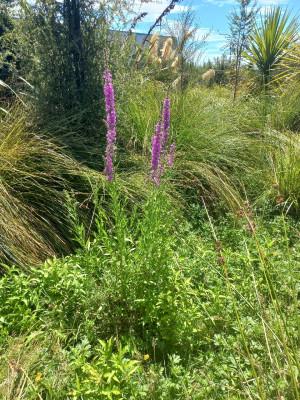As we herald the arrival of spring and look forward to summer, it’s a great time of year to enjoy the increased presence of colour as plants blossom and leaves sprout.
However, amongst all the beauty that manifests, there’s a species or two that we need to see less of.
Purple loosestrife (Lythrum salicaria) is an upright perennial herb that can produce up to 50 stems per plant.
Leaves are arranged in pairs along each stem, and in summer the plant produces striking flower spikes, covered in dense purple-magenta flowers.
Purple loosestrife is a scourge of riparian margins and shallow water areas.
Each plant can produce millions of highly viable, long-lived seeds. These seeds are then spread via water and contaminated machinery along waterways.
Forming tall, impenetrable stands that exclude all other species, they destroy wetlands, marginal habitats and food sources for many fish and bird species, causing blockages and flooding.
Purple loosestrife is a Progressive Containment Pest in the Tasman Nelson Regional Pest Management Plan, meaning we want to shrink its distribution around Tasman.
While the main infestation lurks in Richmond’s urban streams (Borck Creek for example), isolated plants have been found in Matiri Valley and Golden Bay.
If you think you have seen purple loosestrife, please contact our Biosecurity Officers on 03 543 8400 or [email protected].


